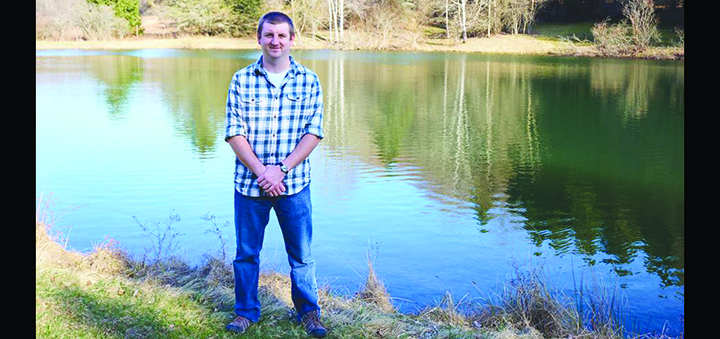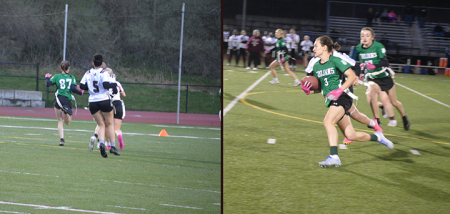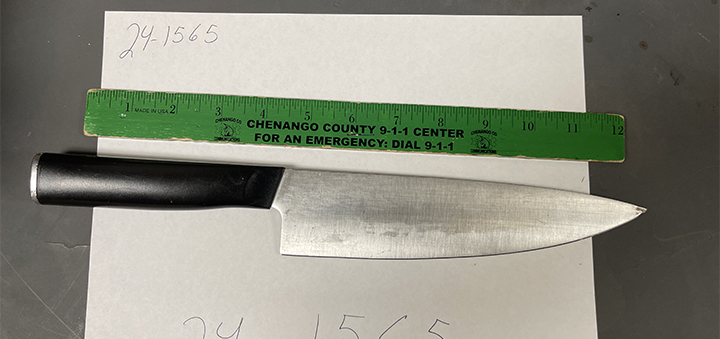Fishing In The Jungle
Published:
August 13th, 2020
By:
Eric Davis

August is usually the apex for the summer season when it comes to water temperature for bodies of water in Upstate New York. This means that fish will head to thermal refuge areas because even though fish are cold-blooded, there is such a thing as too hot for them even.
The most common way fish will escape is to head to deeper water. However, sometimes they are just like humans and will head for the closest bit of shade. When the fish are in dense vegetation or underneath lily pads, catching them can be quite difficult. Here are some tricks to catching fish when they are hiding in heavy cover.
Fish at dawn and dusk when the sun is not as intense, and the fish will be more willing to come out from their hiding spot to feed.
For bass and pickerel, try topwater baits around the edges of weedbeds. If the topwater bite is not happening, try a lure just under the surface like a quickly retrieved spinnerbait or super shallow crankbait. For panfish, hit the same areas with small jigs with curly-tailed grubs or live bait on a slip bobber rig.
Look for areas of flowing water nearby such as where a creek feeds into the lake. This flow of fresh, oxygenated water will attract all kinds of fish from baitfish up to top predators. Use a soft jerkbait, such as the Zoom fluke, rigged Texas-style without a weight retrieved in a sporadic pattern to mimic an injured baitfish. Cast down the edge of a dense vegetation patch and be ready for fish to come rushing out to grab it. If you get fish to attack but cannot seem to get them hooked, try leaving the hook point exposed instead of buried in the plastic. Or if you think you can get away with it, switch to a hard jerkbait that has treble hooks, just be careful as they will snag easy in vegetation.
Shallow lily pad pockets can be some of the best bass fishing, in my opinion. Casting a plastic frog towards shore and retrieving it back to you can mimic a frog that just got startled on shore and hopped in the water to escape. Be ready for some explosive bites as fish seem to shoot out of nowhere to eat the frog. If a fish blows up on the frog but you miss setting the hook, try to cast to the same spot again. If it does not bite this time, switch rods to a soft plastic and try to land it right where the fish was when it first tried to eat the frog. I like to have a stickbait, such as the Yamamoto Senko or Yum Dinger, rigged and ready for when a fish bites but misses getting hooked. Another was to fish these areas is to flip or pitch soft plastics into each clump of lily pads.
This can take a lot of time but if you can pick up on a pattern, like the fish are on the shallow side of the small clumps or where the lily pads meet arrowheads, the fishing can be great. In vegetation that is matted up on the surface, you can punch a soft plastic bug or crawfish rigged to a heavy weight through the vegetation and into the more open area beneath.
On lakes with a lot of residential presence, boat docks can be the best place to fish. A stickbait rigged wacky style can be skipped under the dock where bass can be hiding. It takes some time to get good at skipping under docks and between the pontoons on docked boats so take your time. You can get some practice by trying to skip under low branches in the shallows. Worms fished under bobbers around the docks can lead to some good panfish action.
When fishing in heavy vegetation, the equipment you use can make a huge difference. If you plan on going in after them with either frogs or by flipping/pitching/punching, I recommend a heavy action rod and good braided line of at least 40-pound test. If you know how to run a baitcast reel, use it. This allows you to just winch in fish once they are hooked without having to worry as much about them getting tangled in the vegetation and the line breaking. Make sure to match the line diameter to the reel you are using because braided line has a much higher breaking strength than monofilament of the same diameter. When tying knots with braided line, some knots need to be reinforced with a dab of superglue. This is because the line has a coating that makes it smooth but this prevents some knots from holding as they can slowly keep slipping open.
Author: Eric Davis - More From This Author
Comments






